Landing
The best planting period for peonies of this variety is from September to the end of November. In this case, the plant has time to develop a good root system before vegetative growth begins.
Ideal soil for this flower: clay, humus and well-drained. The optimum pH can range from slightly acidic to slightly alkaline (6.5-7).
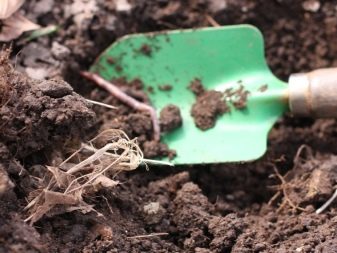
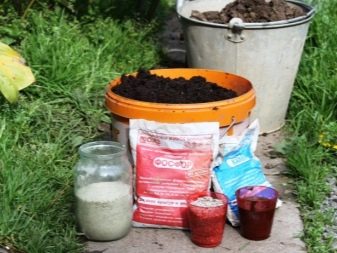
Peonies love to grow in a sunny location, but depending on the region, they can be planted in partial shade. This applies to the south of the country, where the sun can be merciless during the day, and the air temperature warms up to 40 degrees.
Experience teaches that although peonies are very hardy plants, it is better to plant them in partially shaded areas. So, if the sun's rays do not touch the foliage early in the morning, then they remain green longer, the bushes get sick less.


All peonies need space and should not be located too close to the roots of other plants.
If there is no other way out and you have to plant a flower next to a shrub or tree, then special attention must be paid to feeding and watering
Peonies grow slowly, but their bushes can reach two meters in height and the same in width. It is best to plant the bushes at least 1.3 meters from other plants and from each other, so that there is room for new shoots. It is not recommended to plant the plant in places where rainwater accumulates - the root system suffers greatly from this.
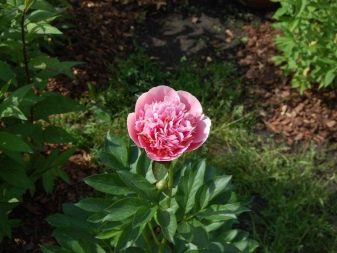
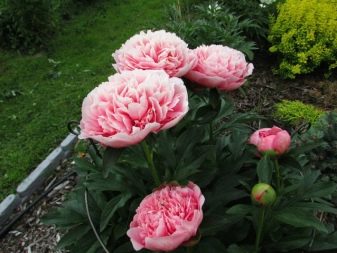
Spring is the best time for mulching, a 2-3 cm layer of organic matter helps to retain moisture and prevents weeds from breaking through. Removing mulch in autumn reduces chances of fungal disease after winter
And also in the spring, it is important to use fertilizers with a low nitrogen content - they promote plant growth
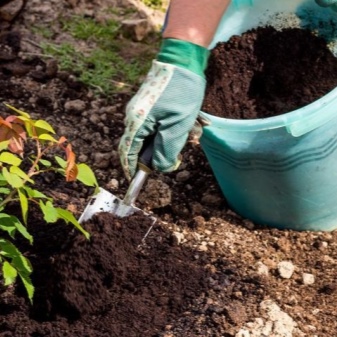

It is worth remembering that fungal diseases appear at high humidity and affect the leaves, stems and flowers of peonies. Spots appear after flowering and gradually enlarge and turn purple-brown as the disease progresses. The fungus attacks the buds and stems, causing them to turn black. Removing and destroying infected parts, especially in the fall, helps control and prevent illness in the next year
In addition, it is important to use fungicides to protect plants from fungi.
It is not difficult to grow beautiful peonies in your area. In order for the plant to feel healthy, it will take from time to time to loosen the soil around and remove weeds. The flowerbed is watered once a week, but abundantly, and during the hot summer months, it is worth taking care that the soil does not become too dry.
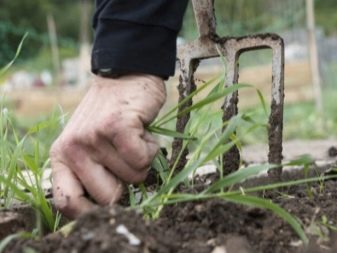
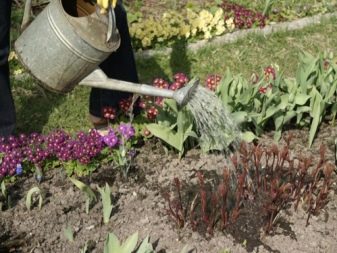
Characteristic
The Etched Salmon description states that it is a hybrid of unknown origin. For the first time information about him became available in 1968. During the flowering period, a fragrant aroma spreads near the flower bed. An average number of buds are formed on the bush, located on strong peduncles. The average height of the bush is 90 cm.
The bright, salmon-crimson hue attracts with golden inner petals. The flowering is double, that is, two pairs of petals are formed on the flower: some go along the edge and are called collar, the second form the core. Collar petals are larger and more intensely colored.
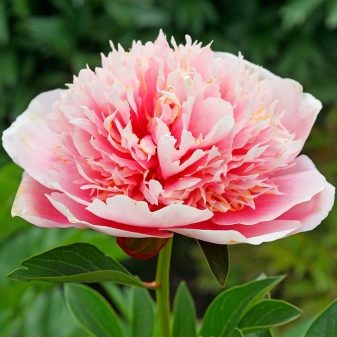
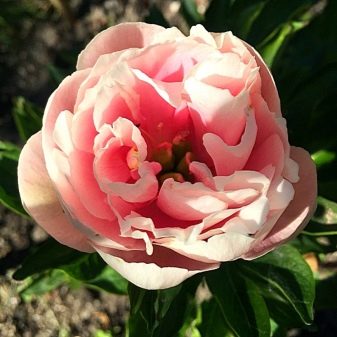
Description and cultivation of peonies "Etched Salmon"
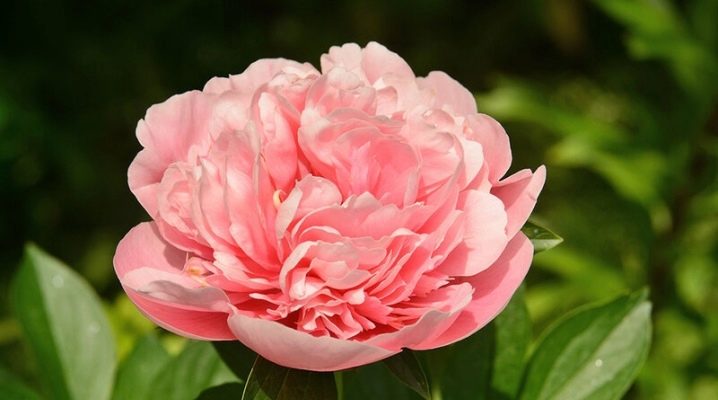
Peonies are presented in a huge variety, among them the Etched Salmon variety is most often found in flower beds. It is difficult not to appreciate it for its delicate shade, ease of care and unpretentiousness.
Characteristic
The Etched Salmon description states that it is a hybrid of unknown origin. For the first time information about him became available in 1968. During the flowering period, a fragrant aroma spreads near the flower bed.An average number of buds are formed on the bush, located on strong peduncles. The average height of the bush is 90 cm.
The bright, salmon-crimson hue attracts with golden inner petals. The flowering is double, that is, two pairs of petals are formed on the flower: some go along the edge and are called collar, the second form the core. Collar petals are larger and more intensely colored.


Landing
The best planting period for peonies of this variety is from September to the end of November. In this case, the plant has time to develop a good root system before vegetative growth begins.
Ideal soil for this flower: clay, humus and well-drained. The optimum pH can range from slightly acidic to slightly alkaline (6.5-7).


Peonies love to grow in a sunny location, but depending on the region, they can be planted in partial shade. This applies to the south of the country, where the sun can be merciless during the day, and the air temperature warms up to 40 degrees.
Experience teaches that although peonies are very hardy plants, it is better to plant them in partially shaded areas. So, if the sun's rays do not touch the foliage early in the morning, then they remain green longer, the bushes get sick less.


All peonies need space and should not be located too close to the roots of other plants.
If there is no other way out and you have to plant a flower next to a shrub or tree, then special attention must be paid to feeding and watering
Peonies grow slowly, but their bushes can reach two meters in height and the same in width. It is best to plant the bushes at least 1.3 meters from other plants and from each other, so that there is room for new shoots. It is not recommended to plant the plant in places where rainwater accumulates - the root system suffers greatly from this.


Spring is the best time for mulching, a 2-3 cm layer of organic matter helps to retain moisture and prevents weeds from breaking through. Removing mulch in autumn reduces chances of fungal disease after winter
And also in the spring, it is important to use fertilizers with a low nitrogen content - they promote plant growth


It is worth remembering that fungal diseases appear at high humidity and affect the leaves, stems and flowers of peonies. Spots appear after flowering and gradually enlarge and turn purple-brown as the disease progresses. The fungus attacks the buds and stems, causing them to turn black. Removing and destroying infected parts, especially in the fall, helps control and prevent illness in the next year
In addition, it is important to use fungicides to protect plants from fungi.
It is not difficult to grow beautiful peonies in your area. In order for the plant to feel healthy, it will take from time to time to loosen the soil around and remove weeds. The flowerbed is watered once a week, but abundantly, and during the hot summer months, it is worth taking care that the soil does not become too dry.


Reproduction
Reproduction of peonies usually occurs by division. In this case, the root system must be exposed in the fall, rinsed well under running water and cut with a spatula so that each new plant has 3-4 buds and 1-2 stems with roots 15-20 cm long.
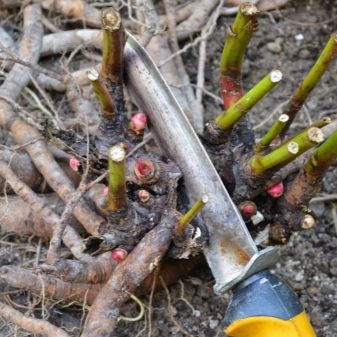

In rare cases, seeds are used. The seed propagation method of peonies is not popular for the reason that the new bush can be very different in characteristics from the parent. In addition, the propagation of peonies from seeds is a rather lengthy process. Seed germination can take two years, but in breeding this is the only way to get new varieties. On average, it takes 7-8 years for a plant that sprouted from a seed to bloom.
More information about the Etched Salmon peony can be found in the following video.
Reproduction methods
The main methods of reproduction are dividing the bush, growing from root cuttings and rooting of cuttings.
Dividing the bush
Sharing peonies is allowed from the age of 5 years, but it is better to postpone this event until the plant reaches 6-7 years. The optimal time for the procedure is from mid to late August. Delenki obtained in September do not take root well and may die in winter.
The procedure is carried out as follows:
- The bush is completely dug out of the ground. You need to choose a time when the buds have already formed, but the root growth has not yet begun.
- The roots are washed in a weak solution of potassium permanganate and dried in the shade for 5-6 hours.
- The bush is cut into pieces with a knife. Each of them should have 3-5 developed buds.
- Rotten parts and damaged roots are cut off from the cut.
- Then the resulting parts of the rhizome are soaked in a fungicide solution to prevent fungal diseases.
- After processing, the rhizomes are planted in separate pits.
Getting plants from root cuttings
Obtaining root cuttings is the most economical way of propagating a peony: from one rhizome, from 20 to 40 cuttings are obtained.
The procedure consists of the following steps:
- Immediately after the spring melting of snow, the soil at the location of the bush is dug to a depth of 12-15 cm.
- Part of the rhizome with buds is cut off with a shovel.
- The part remaining in the soil is covered with soil with humus and ash. By the fall, shoots will grow from dormant buds and the bush will recover.
- After recovery from an adult bush, you can get another 5-10 pieces of rhizome for transplanting.
Reproduction by the Shlomin method
An improved method for growing vertical layers was developed by the florist G.K. Shlomin. The author's experiment was started in 1982 on two-year-old bushes.
Reproduction by this method is carried out as follows:
- In the spring, on the shoots that have emerged from the soil, they put on high cans, open on both sides.
- As the stems grow, a nutrient mixture is gradually poured into the banks - humus, black soil and sand in equal proportions. The soil in the jars is regularly moistened.
- 2 times during cultivation, the shoots are fed with a weak solution of the Heteroauxin preparation. To prevent overheating of the stem, the cans are wrapped on top with cardboard and foil. The top is left open.
- By autumn, a separate root system is formed on each shoot.
- In September, each shoot is pruned under the jar and separated from the mother bush.
- Each specimen is planted in a separate pit, the soil is mulched around with humus.
- After the onset of the first frost, the space around young plants is covered with peat chips, with a layer height of 10-12 cm.
- In the spring, the shelter is raked off and young plants are fed with raw manure mixed with wood ash and superphosphate - 100 g per bush and 10 g of saltpeter.
Proper care of the Etched Salmond peony bush during the growing season is the key to its abundant flowering next year.

Peonies are presented in a huge variety, among them the Etched Salmon variety is most often found in flower beds. It is difficult not to appreciate it for its delicate shade, ease of care and unpretentiousness.
Peony Shirley Temple (Paeonia Shirley Temple) - what kind of variety, history of creation
The plant is the result of American selection. The culture was bred in the middle of the 20th century by crossing the Festival and Mm Edward Doria varieties. The hybrid got its name from Hollywood actress Shirley Temple. In this case, the plant is sometimes mistakenly called Temp.
Shirley Temple peonies
A brief description of the peony by Shirley Temple
Paeonia Lactiflora Shirley Temple belongs to the herbaceous crop category. It is characterized by dense semi-double inflorescences with a diameter of 20 cm. They are distinguished by a light pink color. Some time after flowering, peonies acquire a pure white hue.
The flower includes concave petals that resemble scales. The peony is characterized by stable peduncles that do not need support. They reach a height of 70-80 cm. Thanks to this, the bush is able to maintain its shape and does not collapse under a mass of large inflorescences.
The plant is characterized by openwork dissected leaves.They decorate the bushes until autumn, becoming crimson.
Important! Peonies grow well in any soil, especially in nutritious ones. They practically do not need maintenance and are resistant to frost
Correct planting of the plant
In nature, the wild peony (Maryin root) lives on dry slopes, illuminated by the sun, open meadows and on the banks of rivers. Peony Highlight also prefers dry, loamy areas with a neutral soil response to acidity. Excessive acidity of the soil is neutralized by pouring wood ash under the root.
A step-by-step guide to planting.
- They dig a hole 60x60x60 centimeters in order to put a plant feed into it with a margin for many years.
- At the bottom of the pit, drainage is laid with a layer of 25 centimeters of broken brick, pieces of wood, pebbles, coarse sand.
- The top dressing layer is covered with a layer of 30 centimeters, which includes humus, compost, lime, wood ash.
- From above, the pit is filled to the top with earth mixed with compost and left to shrink for 10 days.
- After 10 days, the roots of the seedling are placed in the recess of the hole formed during shrinkage, and sprinkled with a layer of earth 4-5 centimeters, without covering the root collar.
The soil in the hole must be constantly moist for the plant to take root as quickly as possible. Taking into account the growth of the bush, the distance between the seedlings should be at least 1.5 meters.
Classification of peony flowers by shape
The genus Peony has 34 species. There are more than 5,000 varieties of peonies with a wide variety of characteristics. In order to somehow navigate all this diversity, a convenient classification of varieties according to their inflorescence shape was invented.
- Japanese or Chinese peonies are a cross between a double and a simple flower. The stamens are petal, bent inward. The color is yellow, pink or red, it can match the color of the petals or not. The stem is straight and strong.
- The anemone-like appearance gives at least 5 leaves arranged in 2 rows. The stamens are modified and fill the center of the flower. The color of the stamens can be any.
- Non-double peony varieties have a large bud, consisting of only 5-10 petals arranged in 1-2 rows. The stem is always straight and strong.
- A semi-double flower has 5 or more petals. The stamens are in the center or between the petals, arranged in an annular manner. Such peonies always stand for a long time after cutting.
- Terry peonies are difficult to confuse with others. They have 5 or more wide petals. Stamens and pistils can be simple or modified. The buds are always lush, elegant.
Photo of blooming peonies flowers
In addition to the difference in flowers, peonies are divided into tree-like and herbaceous.
- Treelike varieties of peonies grow as shrubs up to 1.5 meters, and in the southern regions - up to 2.5 meters. Caring for it is similar to caring for lilacs or similar flower shrubs. The buds are always large (up to 30 cm in diameter). Several dozen inflorescences can develop on each shrub at the same time, and this, of course, is an amazing sight. The flower type is regular, semi-double or double. There are up to 500 varieties.
- Herbaceous peonies have an incredible number of varieties (4,500 or more) and are in great demand. By the type of bud, they can be double, non-double, anemone, semi-double, Japanese. It grows as a bush up to 150 cm, for the winter the stems die off if they are not cut off.
There is also a separate type of ITO peonies. These are hybrids artificially bred in order to obtain yellow peonies. Inflorescences can be semi-double or double. The main disadvantage is that over time, the roots grow stiff, they are very difficult to propagate, and the cost of such seedlings can be prohibitive.
Disease prevention, pruning
The culture is not susceptible to diseases and parasites. But for prevention use drugs "Biotlin" and "Actellik".
The description of Etched Salmon peony agrotechnics includes pruning and shaping the bush, because it thickens by the age of 7-8. The peony loses its attractiveness, and its flowers become smaller.
Excess shoots are removed, the plant is thinned out. The faded heads are cut off as soon as the petals begin to crumble. If you are late with the procedure, diseases will begin to develop. The inflorescences are removed by 2/3 of the shoot so that the leafy part of the stem remains from the ground.
When they want to get seeds for breeding, 1-2 inflorescences are left in the bush, which bloomed first.
Mature plants can lose stem resistance. To prevent them from falling to the ground under the weight of the flowers, they are tied up.
Attention! Before winter, the green aboveground part is cut off, hemp is left 3 cm.At the same time, the sections are powdered with ash
Reproduction methods
The main methods of reproduction are dividing the bush, growing from root cuttings and rooting of cuttings.
Dividing the bush
Sharing peonies is allowed from the age of 5 years, but it is better to postpone this event until the plant reaches 6-7 years. The optimal time for the procedure is from mid to late August. Delenki obtained in September do not take root well and may die in winter.
The procedure is carried out as follows:
- The bush is completely dug out of the ground. You need to choose a time when the buds have already formed, but the root growth has not yet begun.
- The roots are washed in a weak solution of potassium permanganate and dried in the shade for 5-6 hours.
- The bush is cut into pieces with a knife. Each of them should have 3-5 developed buds.
- Rotten parts and damaged roots are cut off from the cut.
- Then the resulting parts of the rhizome are soaked in a fungicide solution to prevent fungal diseases.
- After processing, the rhizomes are planted in separate pits.
Getting plants from root cuttings
Obtaining root cuttings is the most economical way of propagating a peony: from one rhizome, from 20 to 40 cuttings are obtained.
The procedure consists of the following steps:
- Immediately after the spring melting of snow, the soil at the location of the bush is dug to a depth of 12-15 cm.
- Part of the rhizome with buds is cut off with a shovel.
- The part remaining in the soil is covered with soil with humus and ash. By the fall, shoots will grow from dormant buds and the bush will recover.
- After recovery from an adult bush, you can get another 5-10 pieces of rhizome for transplanting.
Reproduction by the Shlomin method
An improved method for growing vertical layers was developed by the florist G.K. Shlomin. The author's experiment was started in 1982 on two-year-old bushes.
Reproduction by this method is carried out as follows:
- In the spring, on the shoots that have emerged from the soil, they put on high cans, open on both sides.
- As the stems grow, a nutrient mixture is gradually poured into the banks - humus, black soil and sand in equal proportions. The soil in the jars is regularly moistened.
- 2 times during cultivation, the shoots are fed with a weak solution of the Heteroauxin preparation. To prevent overheating of the stem, the cans are wrapped on top with cardboard and foil. The top is left open.
- By autumn, a separate root system is formed on each shoot.
- In September, each shoot is pruned under the jar and separated from the mother bush.
- Each specimen is planted in a separate pit, the soil is mulched around with humus.
- After the onset of the first frost, the space around young plants is covered with peat chips, with a layer height of 10-12 cm.
- In the spring, the shelter is raked off and young plants are fed with raw manure mixed with wood ash and superphosphate - 100 g per bush and 10 g of saltpeter.
Proper care of the Etched Salmond peony bush during the growing season is the key to its abundant flowering next year.
Peony Etched Salmon is a wonderful decorative culture that looks like a rose with an exquisite scent. Therefore, the plant is often used to decorate garden plots and flower beds. It is undemanding to care
When planting this plant, it is important to choose the right site and soil composition.


